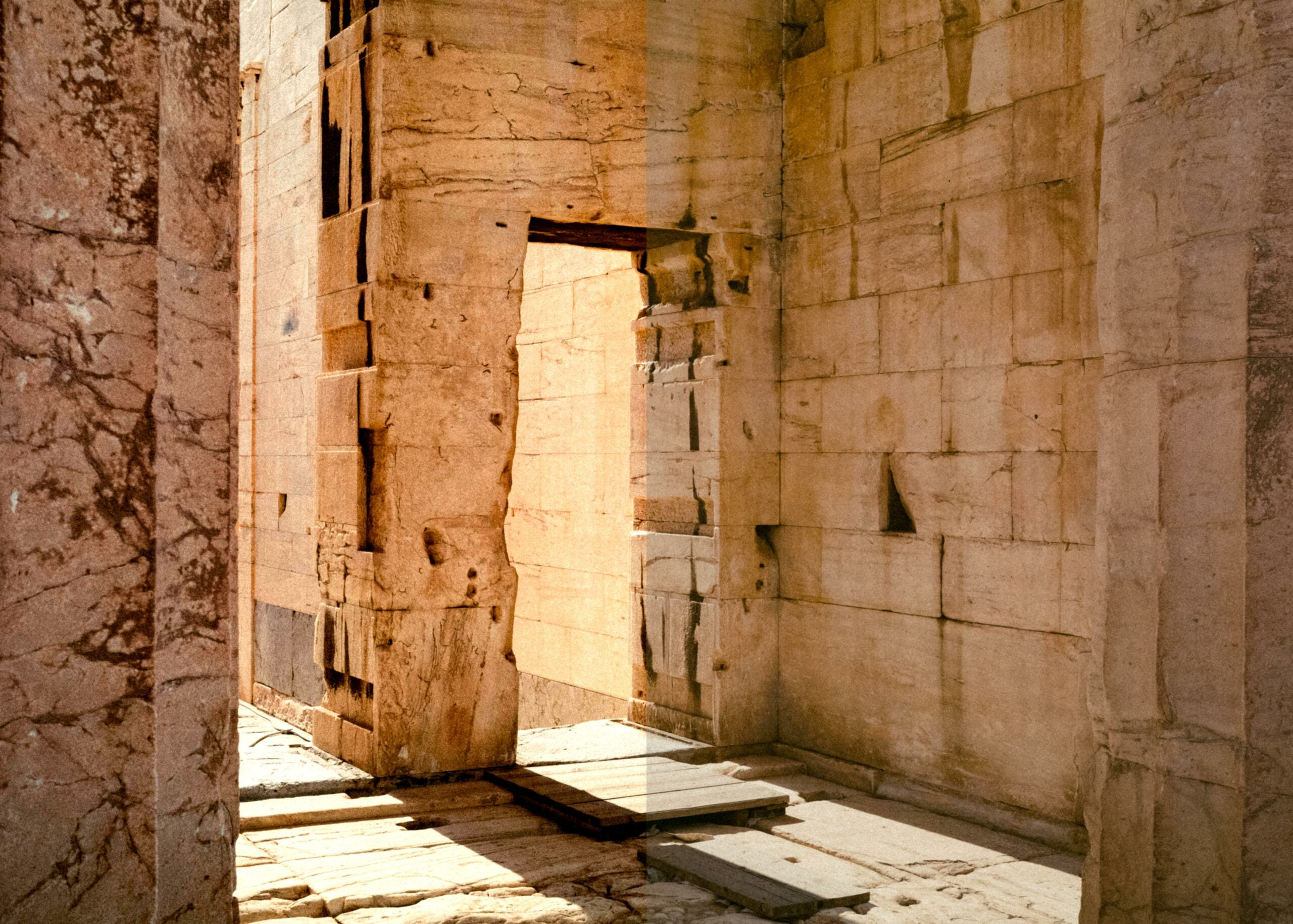Are you ready to embark on a captivating journey through history? In this article, we will peel back the layers of time and unveil the fascinating facts surrounding the iconic Acropolis of Athens. Prepare to be enchanted as we delve into the depths of one of Greece’s most renowned cultural treasures – a symbol of ancient Greek heritage that has stood the test of time. Brace yourself for a revelation: did you know that the Acropolis is home to the Parthenon, a temple dedicated to the goddess Athena, the patron deity of Athens? Join me as we unravel the mysteries and explore the transformative role that this ancient marvel played in shaping the cultural legacy of Greece.
Fact about Acropolis of Athens
The Acropolis of Athens stands as an exceptional testament to the artistic brilliance and profound societal impact of ancient Greek civilization. With its towering position on a rocky hill overlooking the city, it has captured the imagination of people for centuries. Let’s delve into some fascinating facts about this iconic monument that has shaped the cultural heritage of Greece.
1. A Monument of Great Significance: The Acropolis of Athens is the most renowned and well-known acropolis in Greece. The term “acropolis” itself means “high city” and refers to ancient citadels located on elevated rocky outcrops. The Acropolis of Athens, dedicated to the goddess Athena, the patron deity of the city, showcases remarkable architectural and historical significance. It houses several ancient structures, such as the majestic Parthenon, the elegant Erechtheum, and the grand Propylaea.
“The Acropolis of Athens is not just a collection of ancient buildings; it is a symbol of Greek heritage and cultural legacy.”
2. Constructed with White Marble: Most of the buildings on the Acropolis were constructed using pristine white marble. This material not only added to their aesthetic appeal but also contributed to their endurance and longevity. The gleaming white structures stood proudly against the azure sky, radiating a sense of grandeur and sophistication.
3. Resilience Amidst Turmoil: The Acropolis has endured a tumultuous history, facing numerous challenges throughout the centuries. It has survived natural disasters, wars, and even reconstructions. The fortitude of the Acropolis is a testament to the resilience of ancient Greek architecture and its enduring impact on the world.
4. A Home to the Gods and Humans: The Acropolis has been inhabited since the Neolithic Period, bearing witness to thousands of years of human presence. It holds remnants of past civilizations and serves as a time capsule, offering a glimpse into the lives of our ancestors. From ancient Greeks to Byzantines and Ottomans, this sacred site has attracted and influenced generations of people.
“The Acropolis of Athens is not only an architectural marvel but also a historical record, revealing the layers of human civilization that have shaped Greece.”
5. UNESCO World Heritage Site: Recognizing its exceptional universal value, the Acropolis of Athens was designated as a UNESCO World Heritage site in 1987. This prestigious title highlights its significance as an unparalleled cultural and historical landmark. It symbolizes not only the architectural brilliance of ancient Greece but also its contribution to the development of democracy, philosophy, and art.
6. Witness to Timeless Splendor: The Acropolis stands proudly at a height of 156 meters, towering over the city of Athens. It is surrounded by fortified walls that have withstood the test of time, standing for more than 3000 years. As you walk through its majestic gates, you can transport yourself back in time and immerse yourself in the enchanting beauty of ancient Greek civilization.
“The Acropolis of Athens is a testament to the triumph of human creativity, endurance, and the transformative power of art and architecture.”
In conclusion, the Acropolis of Athens is not merely a collection of ancient ruins, but a living testament to the indomitable spirit and cultural heritage of Greece. It has withstood the ravages of time and left an indelible mark on the world. The sheer magnificence of the Parthenon and the grandeur of the Acropolis remind us of the artistic genius and profound societal impact of ancient Greece.
So, the next time you find yourself gazing up at the Acropolis, let your imagination soar and appreciate the rich tapestry of history that unfolds before your eyes.
Athens, the birthplace of democracy and a cultural hub steeped in history. Want to uncover fascinating facts about Athens that you might not know? Well, look no further! Click here for an exploration into the captivating facts about Athens. You’ll be amazed at the wealth of knowledge that awaits you. So, without further ado, let’s dive right in! ../fact-about-athens
Acropolis of Athens: A Glimpse into Ancient Greek Architecture
[youtube v=”EUe6PcEYxmg”]
Key Facts to Astonish You About the Acropolis of Athens
- Acropolis of Athens: The Majestic City on the Air
- A Site Steeped in War and Religion
- The Timeless Icon: Parthenon
- The Elgin Marbles: Scattered Beauty
The Acropolis of Athens, known as the most renowned acropolis in Greece, holds a significant place in history. Dedicated to the goddess Athena, this architectural marvel not only showcases remarkable craftsmanship but also offers a glimpse into the rich cultural heritage of the ancient Greeks.
Sitting atop the highest point of Athens, the Acropolis was often referred to as the “city on the air” due to its strategic location. Initially, the structures on the Acropolis were focused on preparing for war, serving as a primary defense mechanism for the city. As time passed, the site gained religious significance, transforming into a sacred space.
One of the most captivating structures on the Acropolis is the Parthenon, standing proud for over 2460 years. Built around 447 BC, this masterpiece of ancient Greek architecture represents the pinnacle of human creativity and endurance. Carved with intricate details, the Parthenon has withstood the test of time, surviving natural disasters, wars, and extensive reconstruction.
Another highlight of the Acropolis is the Elgin marbles, which were once housed within the site. These magnificent carvings and statues were eventually removed and now reside in several museums worldwide. While their dispersal may spark debate, they continue to awe and inspire visitors with their beauty and craftsmanship.
In 1987, the UNESCO World Heritage Committee recognized the Acropolis of Athens as a site of immense cultural and historical significance. Its enduring nature, with fortified walls standing tall for over 3000 years, emphasizes the resilience of ancient Greek architecture and its impact on the world.
The Acropolis holds remnants of past civilizations, dating back to the Neolithic Period. Its white marble structures add to their aesthetic appeal, creating an atmosphere that transports visitors to a different era. It serves as a living testament to the transformative power of art and architecture, leaving every traveler in awe of human ingenuity.
In conclusion, the Acropolis of Athens stands as a symbol of triumph and resilience. It represents the rich cultural heritage of Greece and the profound influence of ancient Greek civilization. A visit to this iconic site is a journey through time, an opportunity to witness the remarkable feats of human creativity and the enduring power of architectural wonders.
“The Acropolis of Athens stands tall as a testament to human achievement, showcasing the unwavering spirit and artistic prowess of ancient Greece.”
FAQ
Question 1
What does the term “acropolis” mean in relation to ancient Greek structures?
Answer 1
The term “acropolis” means “high city” and refers to ancient citadels located on high rocky outcrops.
Question 2
Who is the Acropolis of Athens dedicated to?
Answer 2
The Acropolis of Athens is dedicated to the goddess Athena, the patron deity of Athens.
Question 3
What are some of the significant buildings found on the Acropolis of Athens?
Answer 3
The Acropolis of Athens contains several ancient buildings of great architectural and historic significance, such as the Parthenon, the Erechtheum, and the Propylaea.
Question 4
When were the buildings on the Acropolis of Athens mostly constructed?
Answer 4
The construction of the buildings on the Acropolis of Athens mostly took place in the 5th century BC.
Question 5
What is the cultural and historic significance of the Acropolis of Athens?
Answer 5
The Acropolis of Athens is a UNESCO World Heritage site and serves as a symbol of Greek culture and democracy. It is a testament to the artistic brilliance and profound societal impact of ancient Greek civilization.
- Discover the Borough of Frenchtown, NJ: A Delaware River Town Blending History, Art & Nature - November 22, 2024
- Discover Clarks Grove, MN: A Small Town with a Big Heart - November 22, 2024
- Califon Borough, NJ: A Small Town with a Big Heart (and Rich History) - November 22, 2024













